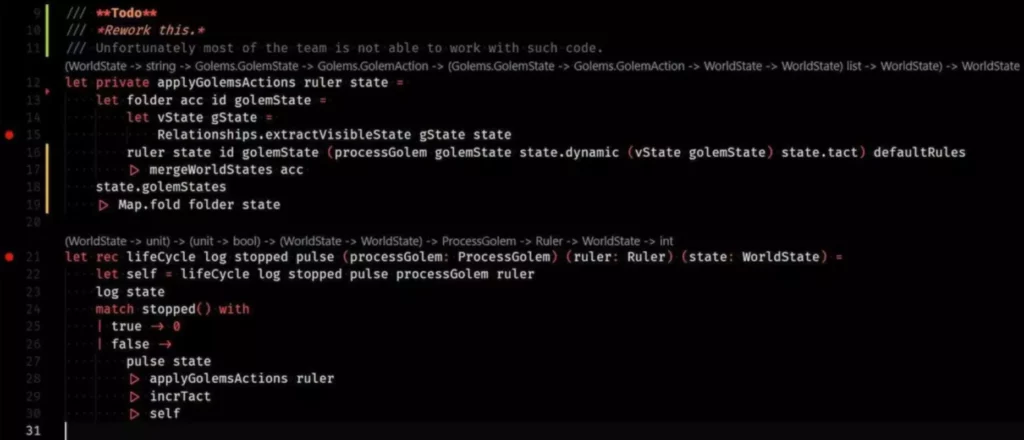Best Practices In Utilizing The Dbcontext In Ef Core
Each of these courses are POCO (an acronym for Plain Old CLR Objects) courses. The idea of a DbContext has been around since the first version of the Entity Framework was released. It is among the elementary constructing blocks within the Entity Framework and Entity Framework Core which would possibly be used for creating, querying, and updating data from a database.

You might then choose the best strategy and modify the query earlier than using the query once more. A DbContext represents a group of entity sets or tables in your database. It permits us to put in writing strongly-typed code against our database with out having to take care of low-level SQL statements or having to fret about manually mapping lessons to database tables.
How To Convert Ms Entry Database To Mysql
- The ModelBuilder provides the API, which is used to configure the form, information sort, relationships between the models and so forth.
- The Database occasion manages the connection to the database, transactions and all different database related operations.
- Principally Model is a category that symbolize database table, stored procedure, operate and so forth.
- The DbContext, the central object in Entity Framework Core, is a gateway to your database.
- When working with Entity Framework Core, the DbContext represents a connection session with the database.
We can create manually this class and configure it in DbContext like below or we can create all models of all or particular objects from Database. Entity framework uses connection string to specify the database it connects to. To arrange a connection string you first have to override the OnConfiguring technique. The OnConfiguring technique accepts one argument of sort DbContextOptionsBuilder. This optionsBuilder object presents numerous extension methods for choosing different server sorts.
The DbContext class is current in Microsoft.EntityFrameworkCore namespace. So, let us see tips on how to create a DbContext class that includes the Pupil and Branch entities. The DbContext is a singleton class that represents the gateway to all data entry, and due to this fact shouldn’t be instantiated more than once. If you need multiple database connections or have a number of lively contexts operating in parallel, then use the DbContextFactory class instead.
You can then benefit from the DbContext constructor to move configuration information, such as a connection string. When working with Entity Framework Core, the DbContext represents a connection session with the database. It works as a unit of labor, enabling developers to observe and control changes made to entities earlier than saving them to the database. We use the DbContext to retrieve data for our entities or persist our entities within the database. Reads courses and code-based configurations to construct an in-memory mannequin, metadata, and relevant database. It also manages associations between using data annotations/Fluent API.
The following code is self-explained, so please undergo the remark strains. The class is derived from the System.Information.Entity.DbContext class known as a context class in the entity framework. Now, let us proceed and attempt to perceive what are the duties of the Entity Framework Context class intimately. The DbContext is usually referred to because the context is the class which is responsible for interacting with the entity mannequin and the database. It lets you question, insert, replace and delete operations on the entities.
It keeps observe of the state of each entity by way of change tracker API. The state of the entity can be Added, Unchanged, Modified, deleted and detached and so forth. We have completed creating the initial domain lessons for our software. As we progress in this course, we will add extra domain classes to this example. The DbContext retains track of modifications made to the entities within its scope. It can detect additions, modifications, and deletions, which permits https://deveducation.com/ for efficient updates to the database.
The Hyperlink Between The Database And Your Utility
In this text, I am going to discuss DbContext Class in Entity Framework Database First Strategy in detail with Examples. Please read our earlier article the place we discussed Model Browser in Entity Framework. At the top of this text, you will understand the need and use of the Entity Framework DbContext class intimately. We are going to work with the identical instance that we created in our Introduction to Entity Framework Database First Strategy article.

Disable Lazy Loading And Use Eager Loading For Improved Performance
Now, we want to delete the newly created entity i.e. the scholar whose student id is 5. To delete an entity utilizing Entity Framework, we need to use the Take Away methodology on the DbSet object. The Take Away technique works for both current and newly added entities. Calling Take Away on an entity that has been added however not yet saved to the database will cancel the addition of the entity. The entity is faraway from the change tracker and is not tracked by the DbContext object and in that case, there is not any database interaction when we call the SaveChanges methodology. In the following example, the scholar is removed from the database whose id is 5.
Once the SaveChanges technique execution is accomplished efficiently, it’ll transfer the Entity state from Modified to Unchanged state. The DBContext’s change tracker keeps observe of those operations and units the EntityState of every entity. This state is then used while saving the entity into the database, by producing the proper insert, alter, delete queries. It gets the info from the database and populates the objects, tracks their state utilizing change monitoring, and eventually persists the info to the database. Subsequent, create one other class file named Branch.cs within the Entities folder and copy and paste the following code. As you’ll be able to see, we are creating the Branch class with a couple of scalar properties and one collection Navigation property known as Students.
It will reuse the connections wherever possible and creates a new connection solely when wanted. The OnModelCreating is the method entity framework approaches where you can configure the model. The instance of the ModelBuilder is passed as the argument to the onModelCreating technique. The ModelBuilder supplies the API, which is used to configure the form, data kind, relationships between the fashions etc. Now that we now have configured our DbContext and outlined the lessons with DbSet, we are in a position to perform operations with it.

In this article, I will focus on the DbContext Class in Entity Framework Core. Please read our previous article, which discusses how to install Entity Framework Core in .NET purposes. We will work with the example we created in our earlier article and discuss How to Install Entity Framework Core in our .NET Software. “Even when it is important to follow the Persistence Ignorance principle in your Domain mannequin, you shouldn’t ignore persistence considerations.
